(From Sense and Sensibility – 1995 Film)
*CAVEAT FOR THIS SERIES OF POSTS*
This series of posts will endeavor to explain the different categories and names given to the various historical homes in England. There are specific criteria that define each type of home by the reasons for which it was built and the purpose it served in the lives of those who lived there. However, these designations are not written in stone (pun not really intended,) and they often changed over time based on additions made to them, renovations, architectural design alterations, and changes of ownership. So a manor house could become a stately home or a country house. A castle could become a manor house. A stately home could be called a castle—just ask Castle Howard. Add to that the names by which these homes were known—Chatsworth House, Lyme Park, Shugborough Hall and it can all be a bit confusing. The purpose of this series of posts is to give the reader a sort of guide from which to start when identifying the historic homes of England and perhaps to understand why and when they came to be. Names are important, especially to living, breathing beings, and these marvelous places are indeed very much alive.
A few things to get straight from the outset
The English idea of a cottage, which is what this post is about, is quite different from the American idea of a cottage.
The American definition of a cottage emphasizes the purpose and location of such a structure. In the United States a cottage is generally a summer residence at a health or pleasure resort. In other words, it is a vacation home known for its small size and rather rustic appearance.
To make matters even more confusing, the English idea of a cottage covers a wide variety of structures each with its own character and specifications. The various types of cottage are defined by their structure, their appearance, their location, and yes, sometimes their purpose. But more about the different types in a bit.
A brief history of the cottage
The word cottage – medieval Latin cotagium – derives from the Old English word cot or cote meaning “hut” and the Old French word cot meaning “hut or cottage” both of which may have come from the Old Norse word kot meaning “hut.”
Under the feudal system in medieval England a cottage was the property of a cottager or cotter or bordar. The cottager’s property included a small house and a plot of land around it just large enough to plant a garden to feed the cottager’s family. In return for this the cottager had to perform some task or work in some position for the feudal lord who actually owned the property. The cottager had no rights based on tenure, worked full-time for the feudal lord, and worked in any spare time to provide for his family by way of the garden and any other skills he had.
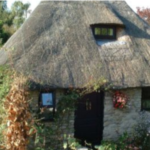
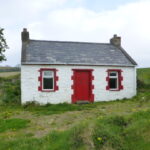
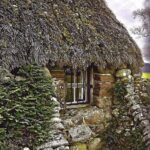
These cottages were small, built to basic function of local materials. In wheat-growing areas, it would be roofed in thatch, and in slate-rich locations, such as Cornwall, slates would be used for roofing. In stone-rich areas, its walls would be built of rubble stone, and in other areas, such as Devon, was commonly built from cob.
Cob was the English term for a basic building material that has been in use in some form all over the world for at least 4000 years. The term was first recorded in England in about 1600. The material consisted of local soil, water, straw, sometimes lime, and any other substrate that needed to be added to make the material sturdy enough for building.
By the mid-18th century and with the advent of the Industrial Revolution the cottage became an inexpensive form of housing for companies to provide for workers in factories, in skilled handcrafts such as weaving, and in the mining industry.
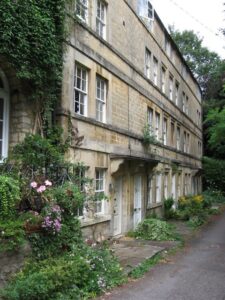
Notice the bank of windows across the top floors. These were installed so that the weavers’ looms were operating in the room with the most light. The weavers lived in the bottom two floors and worked in the top floor.
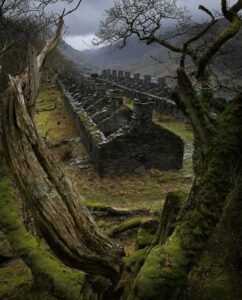
These rows of cottages would have housed mine workers and their families. The roofs would have been either thatch or likely slate as this particular set of cottages housed workers at a slate mine.
Once we move into the 19th century, those cottages not associated with specific industry workers and built as actual homes for families tended to be larger, semi-detached or detached and were often dwellings built specifically on an estate or in a village to house retired retainers or poor relations (for lack of a better term.) Often the dwelling of a vicar was built in this more expansive cottage form.
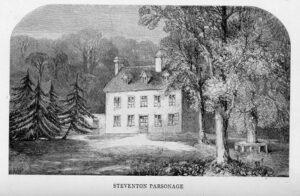
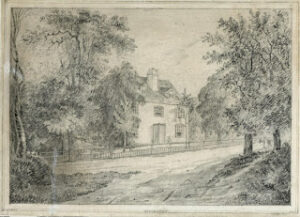
Sketches of George Austen’s cottage parsonage in Steventon.
A few universal characteristics of these cottages are:
1. These houses were found in rural areas. One would not likely see a cottage in London.
2. Though they might, in any form, have been homes for farm workers, other laborers or even farmers who owned smaller properties, they could also be inhabited by parsons and their families or even used as manor houses by untitled members of the aristocracy or those with lower titles like barons and baronets.
3. The cottage can be found in many forms based on its location in England, the wealth of the owner, and its purpose.
4. By the mid-19th and especially in the late 19th century some of these cottages were quite large and quite elegant.
5. The basic tenets of the cottage form in England were and are simplicity, elegance, connection to the land, craftsmanship, tradition, and the beauty unique to rural England.
TYPES OF COTTAGES FOUND IN ENGLAND
Cotswold Cottage
Dating from as far back as the 16th century, cottages in the Cotswolds are characterized by stone walls or limestone walls in shades of honey-color, steeply pitched roofs, and mullioned windows. The doorways are usually arched and the chimneys lead down to large inglenook fireplaces. Gabled windows and stone ornamentation are some of their other features. The interiors tend to be somewhat Tudor in style. Their exterior walls are usually covered with climbing flowers. Roses are a favorite. Small colorful gardens finish off the outdoor appearance. They can be detached or semi-detached or even row houses.
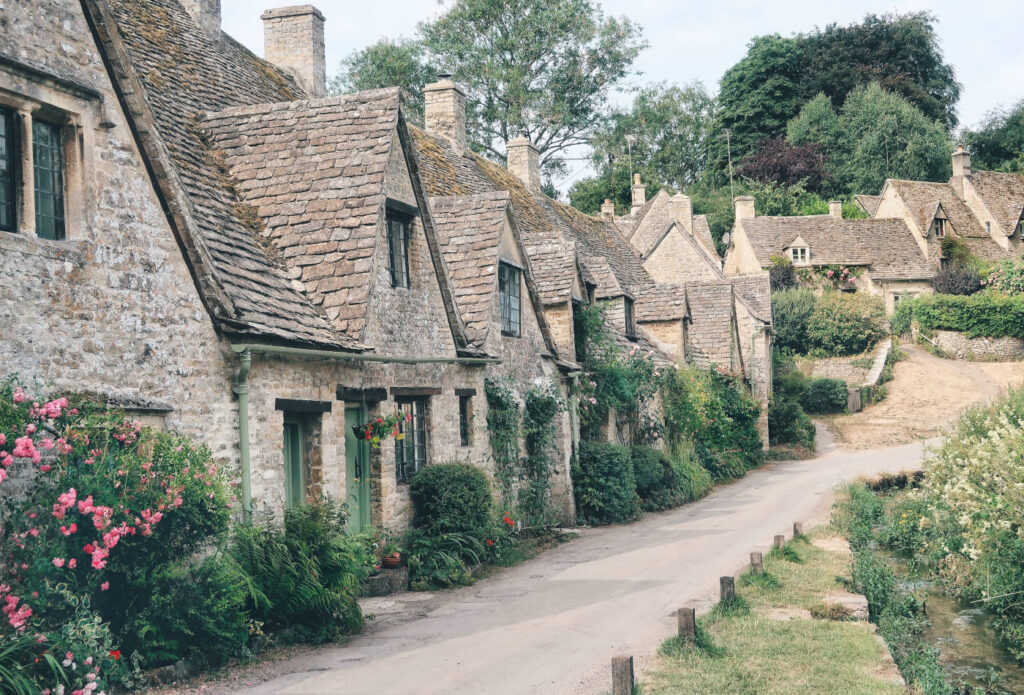
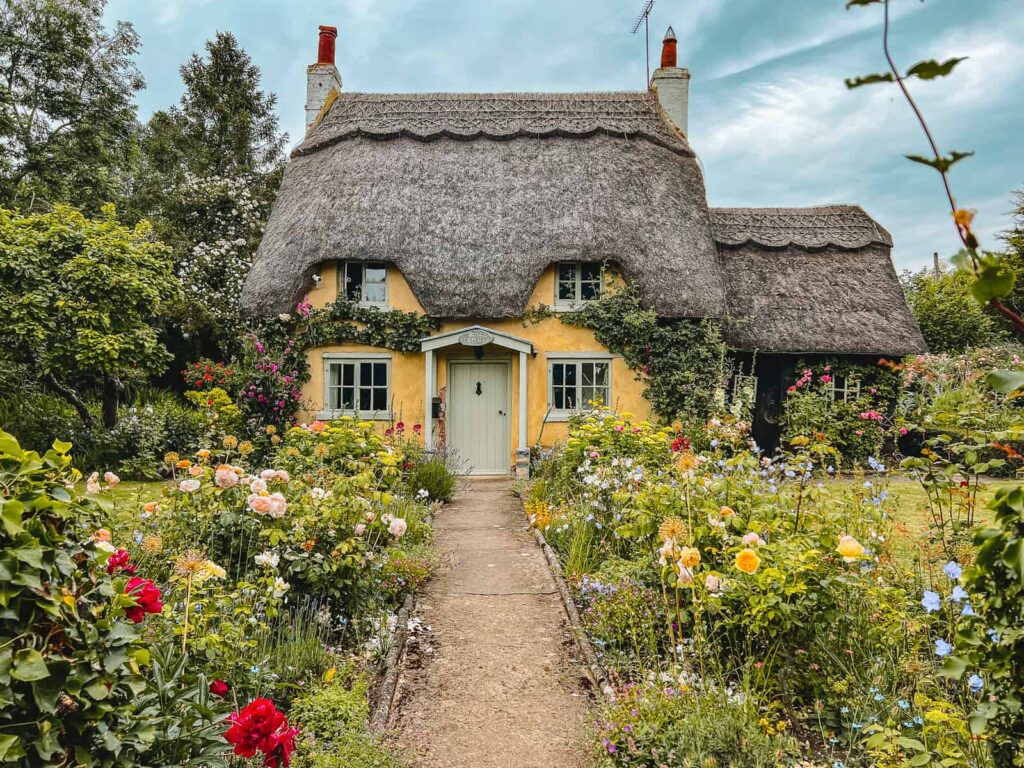
Thatched Cottage
Thatched cottages are perhaps the quintessential image that comes to mind when one thinks of a cottage in England. The most visible characteristic of these cottages is the thatched roof, which has actually been in use in British homes since 7600 BC. A thatched roof is made from reeds and dry straw tightly packed together. In the earliest days of its use thatching was roofing for the poor, a method of convenience where the closest available material was used to protect homes from harsh elements.
Thatch is also a natural insulator, and air pockets within straw thatch insulate a building in both warm and cold weather. A thatched roof ensures that a building is cool in summer and warm in winter. Thatch also has very good resistance to wind damage when applied correctly.
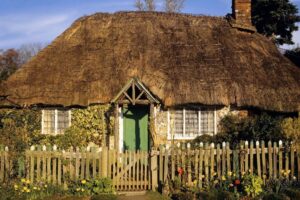
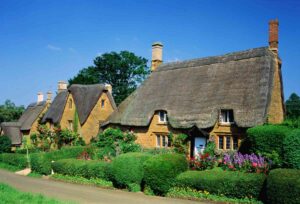
Tudor Cottage
Tudor cottages are characterized by timber-framed construction that features exposed beams and intricate woodwork. As the name denotes this style of cottage came into being during the Tudor era (1485-1603.) The architectural style is derived from the craftsmanship of the medieval era. The facades are usually half-timbered and the windows are generally leaded windows.
Tudor homes are characterized by their steeply pitched gable roofs, elaborate masonry chimneys (often with chimney pots), embellished doorways, groupings of windows and decorative half-timbering. The latter is an exposed wood framework with the spaces between the timbers filled with masonry or stucco. Inside the rooms can sometimes contain dark wood paneling.
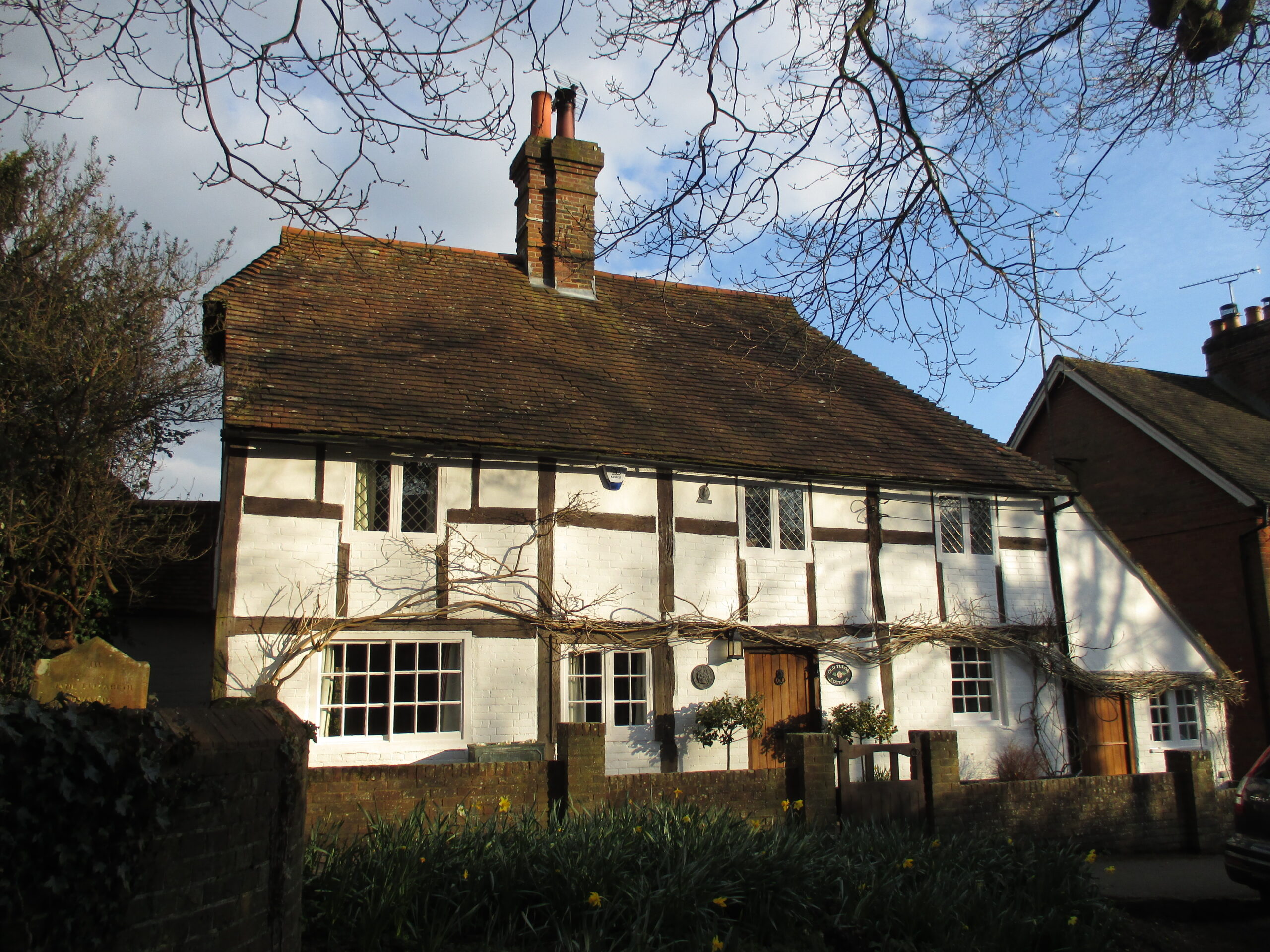
Coastal Cottage
Coastal cottages are generally small and compact – typically one-and-a-half stories with dormer windows under a steeply pitched roof. They feature weathered wood siding, soft pastel colors, dormer windows, and a large front porch. The exteriors are weather-beaten in appearance due to their proximity to the coast. The walls inside and out are whitewashed as this is the sturdiest and simplest wall covering and tends to stand up to the predations of salt air.
They are generally one or two stories and have a limited number of rooms with one room opening into another. The second floor can feature a sort of balcony corridor around the central ground floor with bedrooms that open onto that corridor.
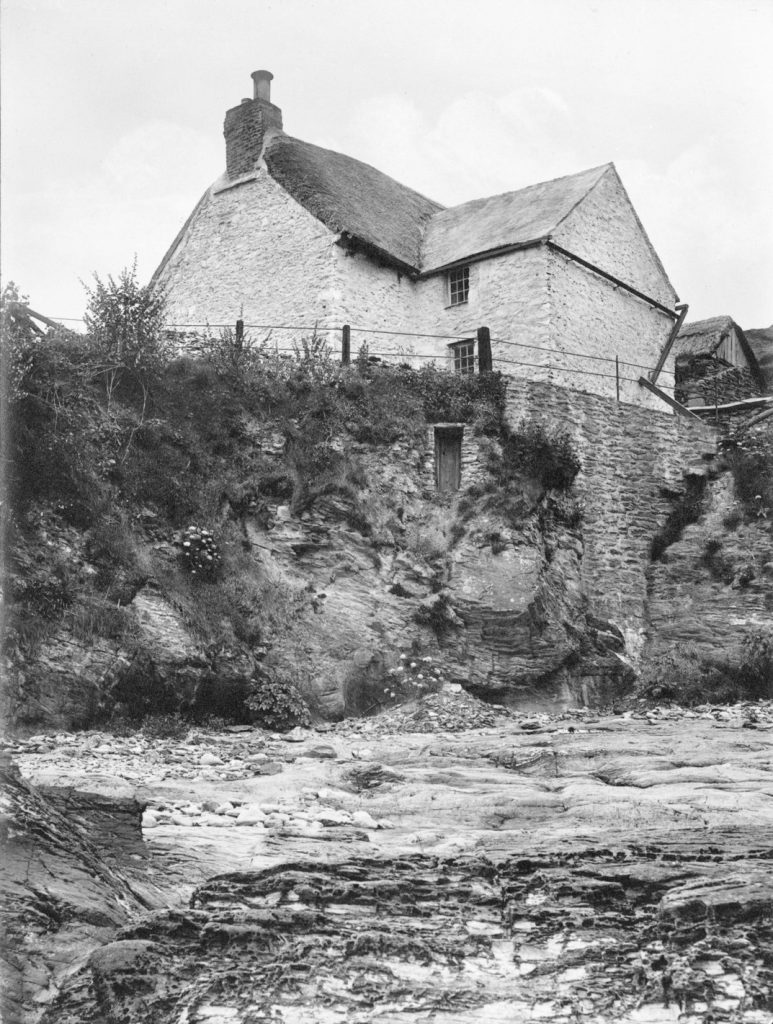
Chocolate Box Cottage
I am not going to say a great deal about the idea of a “Chocolate Box” Cottage. This term does not refer to a specific style of cottage per se. Gaining popularity in the mid-20th Century, the phrase ‘chocolate box cottage’ derives from the picturesque scenes printed on boxes of Cadbury’s chocolates throughout the 1950s and 60s. During this period, the confectionery company included scenes from the ‘model village’ of Bourneville on their packaging.
A few final words on the English Cottage
The cottages described above tend to create a picture of a small, cozy, cute structure meant to be extremely utilitarian and plain or cozy and cute. But the term cottage covers a lot of structures throughout English history. Many were small and functional. But some were actually what you and I might consider nice large homes, even mansions. Which reinforces the idea that many building historians and architects have – A cottage is a cottage in the eye of the beholder.
When Fanny Dashwood made her statement that I have used as the title for this post, she certainly meant to issue an insult about the Dashwood girls fallen circumstances. However, you can rest assured the image in her mind was not one of the smaller residences depicted above. She knew that a cottage on an estate offered by Mrs. Dashwood’s cousin would be a somewhat substantial residence, even with the poky hall and smoky fireplace! In Fanny’s mind the cottage likely looked like this.
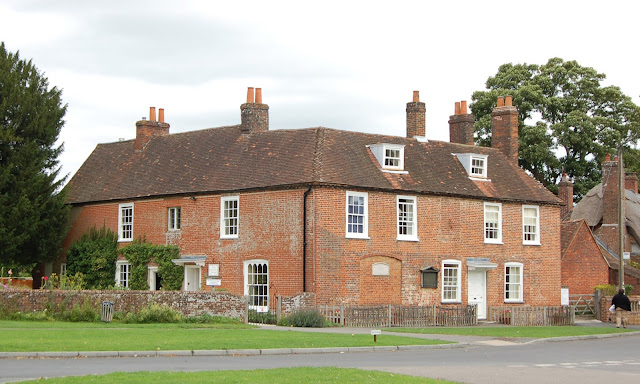
Or perhaps this:
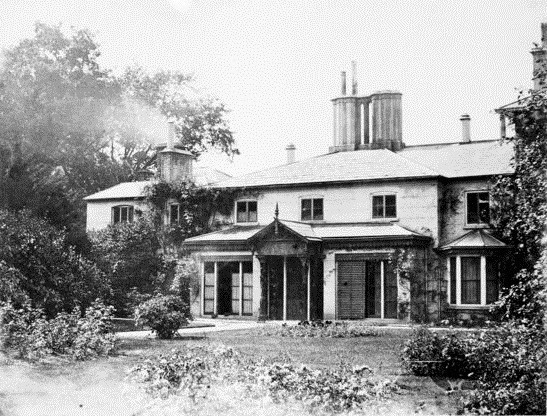
Yes, THAT Frogmore Cottage
The final post in this series will deal with terraced houses another unique and elegant form of residence in English history.